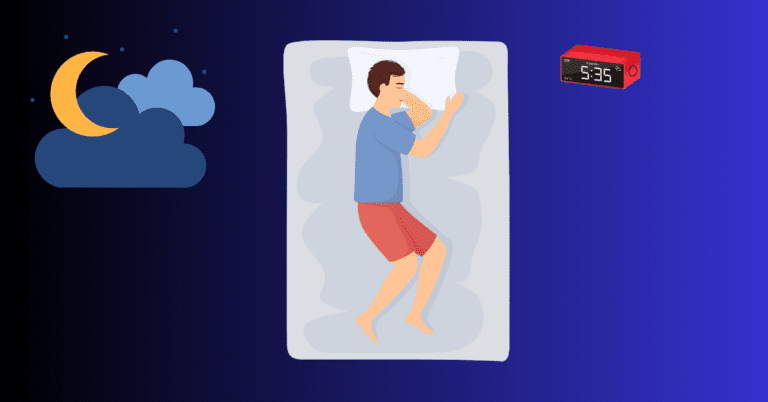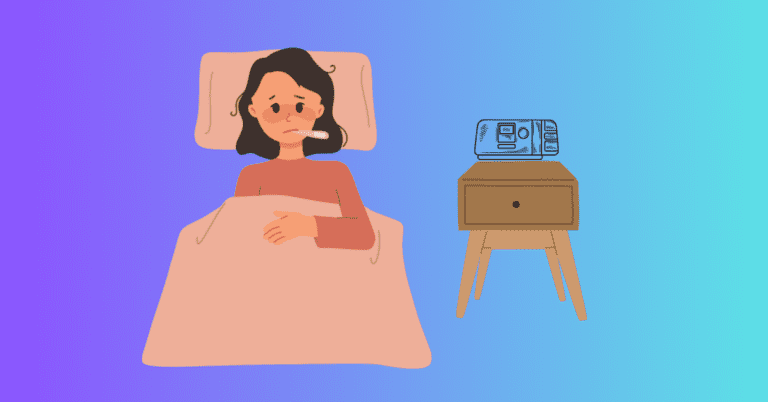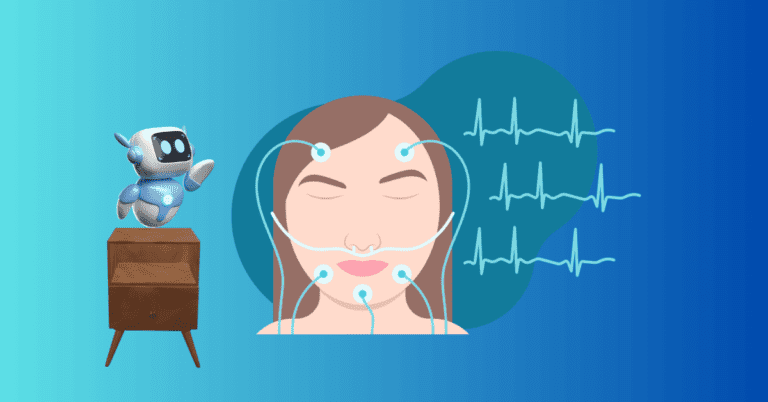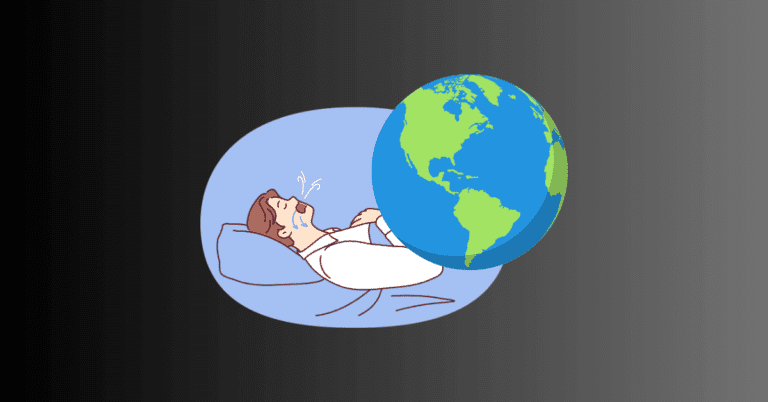At Home Sleep Apnea Test – What to Expect
If you think you have sleep apnea then the first thing you should always do is see your physician or doctor. This is exactly what I did.
Your doctor will then probably ask you a few questions such as loud snoring, enlarged tonsils, foggy headaches, and dry mouth. If it looks like the diagnosis could be sleep apnea, then you will get given a referral to see a sleep specialist.
This is what your sleep report could look like.
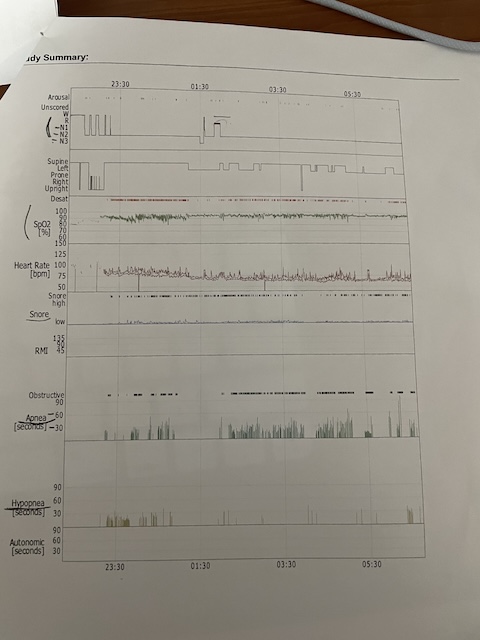
For me, I kinda expected I had sleep apnea because I always knew I snored very loud and my morning headaches were getting worse and turning into frequent migraines.
Either way, what is important is that you receive a referral to have a sleep study, also known as known as polysomnography.
A sleep study is a non-invasive overnight test used to diagnose sleep disorders by monitoring your brain waves, heart rate, breathing patterns, oxygen levels, and body movements.
All this data is gathered so a correct diagnosis can be obtained.
In this guide, I’ll walk you through the ins and outs of a sleep study, why it’s necessary, and how you can prepare.
What Is a Sleep Study?
A sleep study is a diagnostic test designed to monitor different aspects of your sleep. Typically conducted overnight, either in a sleep lab or at home, the study collects comprehensive data that help your doctor diagnose sleep disorders such as sleep apnea, restless leg syndrome, insomnia, and narcolepsy.
Sleep studies involve multiple sensors attached to your body to track vital information while you sleep. The procedure is painless, and the data gathered should hopefully paint a picture of why you may be struggling with sleep.
Why You Might Need a Sleep Study
Sleep apnea is a serious condition and can lead to a whole host of problems not limited to
- Type 2 diabetes
- High Blood Pressure (Hypertension)
- Heart Failure
- Kidney Disease
- Stroke
- Fatty Liver Disease
- Sexual Dysfunction
Sleep apnea is extremely common. Around 39 million U.S. adults have obstructive sleep apnea, and 936 million adults around the world, including Joe Biden.
Sleep disorders often go undiagnosed because their symptoms happen while you’re asleep, making them difficult to notice without monitoring. Common signs that might prompt a sleep study include:
- Loud snoring
- Gasping for air during sleep
- Waking up tired despite a full night’s sleep
- Daytime fatigue and irritability
- Trouble falling or staying asleep
- Waking up with headaches
For the focus of this article I am talking about diagnosing obstructive sleep apnea (OSA), one of the most common sleep disorders. In cases of sleep apnea, your airway becomes blocked during sleep, causing frequent disruptions to your breathing and sleep patterns. Without a sleep study, it can be challenging to confirm the presence of this condition.
Sleep Lab Sleep Apnea Test
So, I undertook my sleep study at home, but if you are going to have one at a sleep clinic, this is what you might expect …
When you arrive for your sleep study, you’ll be guided to a comfortable room that looks much like a hotel room. Though it might feel a little different from your home, the goal is to create a setting that encourages restful sleep while allowing your body to be closely monitored.
Here’s what you can expect during a sleep study:
- Preparing for the Study: Once settled into your room, a sleep technologist will attach sensors to your body, including your head, face, chest, legs, and fingers. These sensors track various vital signs:
- Brain Waves (EEG): Electrodes placed on your scalp measure electrical activity in your brain to monitor sleep stages.
- Eye Movement (EOG): Electrodes near your eyes record movements to determine when you enter REM sleep.
- Heart Rate (ECG): Sensors on your chest monitor your heart rhythm and detect irregularities.
- Breathing Patterns: Straps placed around your chest and abdomen detect how well you’re breathing.
- Oxygen Levels: A small device attached to your finger or ear measures oxygen levels in your blood.
- Limb Movements: Sensors on your legs monitor for restlessness or abnormal movements during sleep.
- During the Night: Once you’re hooked up to the sensors, it’s time to try to sleep as normally as possible. The technicians will monitor your sleep remotely through the night to ensure the data is being recorded accurately. If necessary, they may come in to adjust the sensors or offer assistance if you wake up feeling uncomfortable.
Although being connected to so many devices might feel odd at first, most people find that they get used to the equipment quickly and are able to sleep during the study.
- Morning After: In the morning, the sensors will be removed, and you’ll be free to go home. It’s a good idea to ask your sleep center when you can expect to receive the results, as it typically takes a few days for a sleep specialist to analyze the data.
Home Sleep Apnea Test
The other test is of course the home sleep study.
You are given a bundle of sensors and wires and a black box device that does the monitoring.
Then it’s a case of following the instructions and placing the sensors on yourself. After that, you have to try and get to sleep.
Home studies are less complex than in-lab sleep studies and primarily focus on diagnosing sleep apnea. If your doctor thinks you should be monitored for other conditions then they might insist on a lab sleep study.
So while you’re asleep, the portable device will measure breathing patterns, oxygen levels, and heart rate while you sleep in your own bed. All provide the data for a diagnosis to be made.
Sleep Studies and Diagnosing Sleep Apnea
During a sleep study for suspected sleep apnea, the focus will be to measure your AHI. This is the number of pauses in your breathing (apneas).
Normal is considered to be less than 5 events per hour. Mine was measured at 51 events per hour, almost 1 a minute which is considered Very Severe.
If sleep apnea is detected, your doctor will discuss your treatment options, which may include lifestyle changes, CPAP therapy, or other interventions to treat your symptoms.
How to Prepare for a Sleep Study
To ensure the most accurate results, it’s important to prepare for your sleep study properly. Here are some tips:
- Follow your usual routine: On the day of the study, try to follow your regular routine as much as possible. Avoid naps, as they can affect your ability to fall asleep during the study.
- Avoid caffeine and alcohol: Both caffeine and alcohol can interfere with sleep, so avoid them for at least 24 hours before your study.
- Wash your hair and face: Clean skin and hair help the sensors adhere better. Avoid using heavy lotions or hair products, which could interfere with the electrodes.
- Bring comfort items: If you have a favorite pillow or blanket, bring it with you to make the sleep lab feel more like home.
- Arrive on time: Plan to arrive at the sleep center a little before your scheduled time to complete any necessary paperwork and allow the technologist to set up your sensors.
Conclusion
If you’re still wondering, “what is a sleep study?” – it’s simply a diagnostic test designed to help doctors get a clear understanding of your sleep patterns and identify any potential issues, including sleep apnea. Although the idea of sleeping in a lab or with equipment may feel strange at first, the test itself is painless and can provide invaluable information that could lead to better sleep and overall health.
Personal Insight: From my own experience with sleep apnea, undergoing a sleep study was a turning point. It revealed why I was waking up exhausted and struggling through my days. Though the process felt a little intimidating, the insights I gained from my sleep study changed my life for the better. If your doctor recommends one, don’t hesitate – it could be the first step toward a healthier, more rested you.
